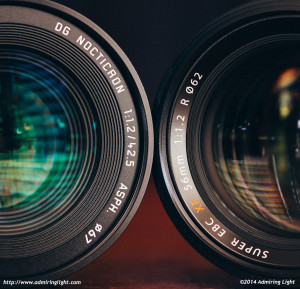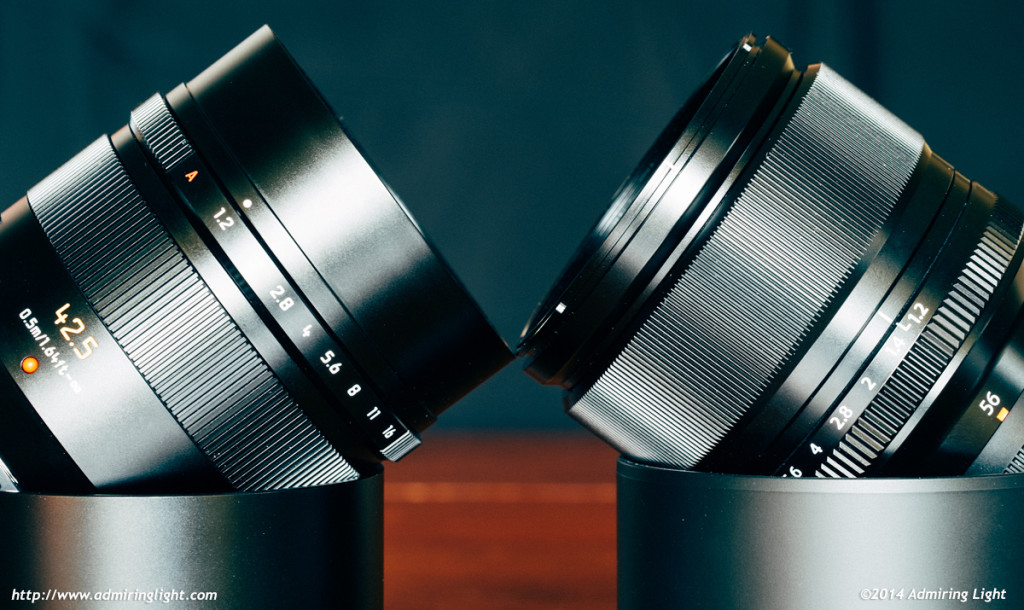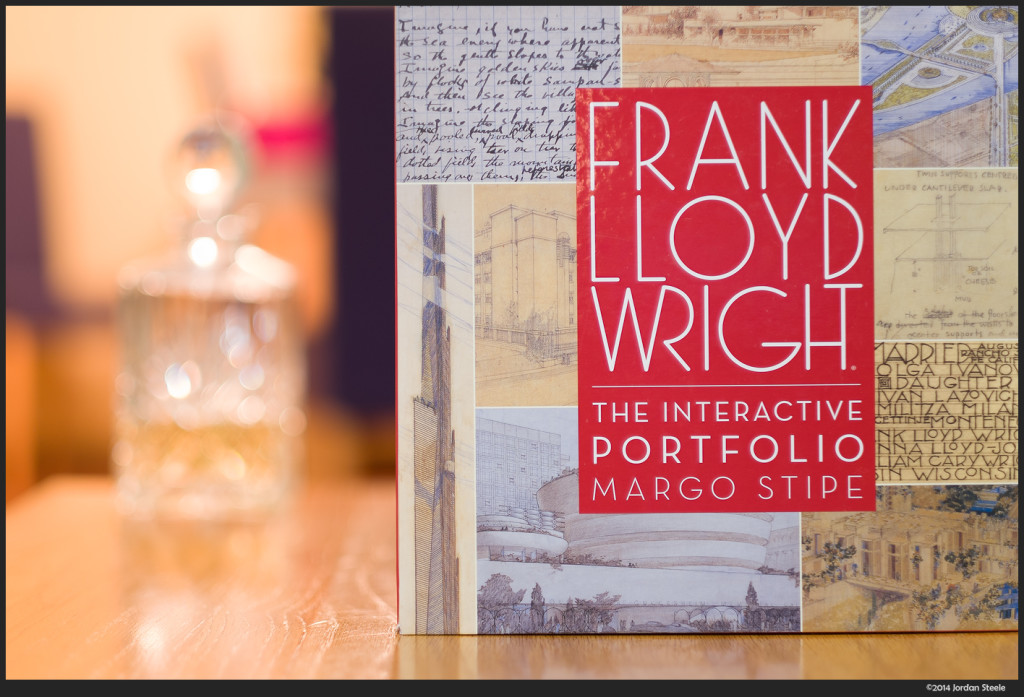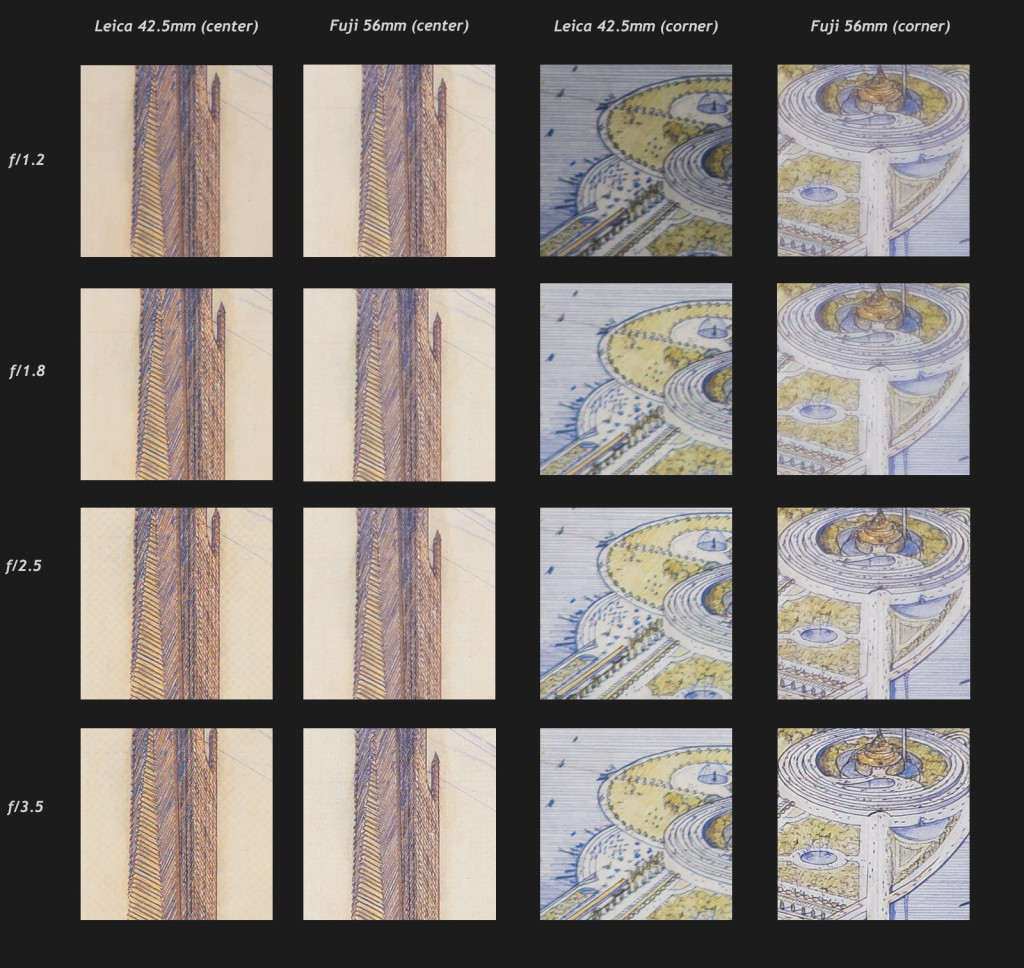 It is time for another battle! Both Fuji and Panasonic have released fast 85mm equivalent lenses with f/1.2 maximum apertures over the past month, and both are turning out to be truly outstanding lenses. While there are likely few people who are contemplating which to buy between the two (as that would require simultaneously having both Fuji and Micro 4/3 systems…which is something I have, but is not too common), with two fantastic lenses such as these coming out around the same time, there’s bound to be comparisons.
It is time for another battle! Both Fuji and Panasonic have released fast 85mm equivalent lenses with f/1.2 maximum apertures over the past month, and both are turning out to be truly outstanding lenses. While there are likely few people who are contemplating which to buy between the two (as that would require simultaneously having both Fuji and Micro 4/3 systems…which is something I have, but is not too common), with two fantastic lenses such as these coming out around the same time, there’s bound to be comparisons.
I reviewed the Fuji 56mm f/1.2 recently and found it to be a truly stellar lens. My review of the Panasonic Leica 42.5mm is also now up.
So let’s take a look at these two lenses and how they stack up.
Important note: This article was updated on 3/20/14 to reflect new findings on the Fuji 56mm f/1.2. I recently discovered that my Fuji 56mm had a faulty focus motor (it arrived this way, making odd sounds that stopped after a short while, but I later discovered the focus clutch had broken, making it unable to hold focus when the lens was pointed up or down). I received a replacement lens yesterday, and noticed that not only did it have the properly functioning focus motor that you’d expect, but that the lens was sharper as well. In comparing cross-frame sharpness, the second lens did not display what I viewed as a ‘mid-frame dip in resolution’ in the original test. Based on the more even sharpness profile, I conclude that the first tested copy of the Fuji 56mm f/1.2 had a slightly misaligned element that caused a drop in sharpness towards the edges of the frame at wide apertures. It also decreased contrast. This comparison has been updated for the first portion of the test to reflect that second lens. While I feel the ‘portrait test’ on page 3 would likely similarly be affected, I can’t really exactly recreate that shot, though I may try in the next few days to get it close and will update the article at that time.
Tale of the Tape:
The first contender is the Fujifilm Fujinon XF 56mm f/1.2 R. The lens weighs in at 405g, and measures in 73.2mm in diameter and 69.7mm long.
The second contender is the Panasonic Leica 42.5mm f/1.2. The lens weighs in at 420g, measuring 74mm in diameter and 77mm long.
As you can see from above, despite needing to cover a smaller image circle and having a shorter focal length, the Panasonic Leica 42.5mm is the larger of the two lenses, coming in nearly a centimeter longer and very slightly heavier. In practice, the two lenses feel relatively similar in size and weight, but it is interesting. One other interesting thing of note is that the 42.5mm lens is capable of covering an APS-C sensor, though of course you can’t do much with this since focus is by wire.
The two lenses both have bodies built entirely of metal. Both have well damped focus rings and aperture rings, and both are very solid. Overall, I think the Leica 42.5mm has a little nicer fit and finish, and feels a little more premium in the build department, though the Fuji isn’t far behind. Both are very well-built lenses.

The Test
Please note that this test is limited in scope. In using both lenses, I have noticed some additional things about each lens that aren’t really showcased in this situation. I will summarize those findings at the conclusion, as I don’t really have solid head to head test shots to show you, but they may be worth noting.
I set up the book you see, which is in a hard case that is very flat. Focus distance is approximately 1 meter. I ensured the camera was square to the book. I set the crystal decanter behind the book by about two feet to provide a good target for evaluating bokeh. The cameras were tripod mounted, set to the exact same exposure parameters (ISO 200, f/1.2 and 1/8 second, adjusting aperture and shutter speed while keeping ISO constant for smaller apertures). Shots were triggered with 2 second self timer. There are very slight differences in camera position left and right due to where the tripod plates sit on the cameras, but otherwise, the cameras were in identical positions for each shot.
Images were processed in Lightroom 5.3 and were converted straight from RAW aside from my standard sharpening and custom white balance from the white letters on the book.
Here are the overall scenes at f/1.2:


To evaluate sharpness, I took crops from the center and upper right corner of the images at f/1.2, f/1.8, f/2.5 and f/3.5. The results are shown below. Click on the image, then click on the green arrow below to view full size.

Some interesting results, in my opinion. Getting the obvious out of the way: both lenses are fantastic. Each lens is very sharp in the center right from f/1.2. At f/1.2, the Fuji has a slight edge in the center of the frame, while the Leica has a sharper center at f/1.8 and f/2.5. By f/3.5, the Fuji has caught up again with the Panasonic, though the X-Trans sensor prevents the moire that is present in the Panasonic crop.
In the corner, the Fuji has an edge throughout at this focus distance. While the Leica 42.5mm has an edge in overall contrast at f/1.2 and f/1.8, the Fuji 56mm is resolving more fine detail in the corners at these apertures. By f/2.5, the Fuji has a notable boost in contrast while keeping a slight resolution edge.
When I originally did this test, I had noticed my first copy of the 56mm showed some weakness a little ways in from the corners of the frame and simply assumed it was how the lens performed at f/1.2. Upon receiving a replacement lens, I could see that it was not the case for a properly assembled lens. Below are crops taken from the lower right side of the frame.
As you can see here, the Fuji again has the lead, both wide open and stopped down (though both are very sharp stopped down).
Overall, the sharpness comparison is pretty darn close. At this focus distance, which is approximately 1 meter, the Fuji is showing itself to be a little bit sharper all things considered.








Leave a Reply